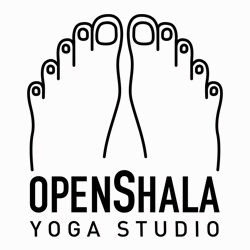
ORIGINAL NAME
BHADRASANA / BADDHA KONASANA
TRANSLATION
BHADRA: Virtuous, pure, prudent, excellent, wise.
BADDHA: Linked, conditioned; In Yoga it refers to a tie in the pose (in this case: the interlaced hands controlling the feet).
KONA: Triangle.
COMMON WESTERN NAMES
Shoemaker pose, butterfly pose.
CATEGORY
Meditative, for the joints.
BENEFITS
If practiced correctly it can, among other things: stretch muscles and ligaments in the urogenital region, exercise knee and hip joints, increase flexibility in the lumbar area and pelvic floor (recommended for pregnant women), provide a massage to the abdominal organs, reduce pressure on the spine and sciatica, prevent hernias in the lower back, decrease constipation, stimulate the reproductive system, improve circulation in the legs, relieve tiredness accumulated in the muscles of the legs.
It trains the mental attitude of discipline (Dharma Bhava).
It expands the energetic center located in the sacrum area, Svadhisthana, related to: gonads, all the attributes related to subconscious and the beginning of psychic energy, emotions, creativity and sexual energy, the element of Water.
CONTRAINDICATED
Recent injuries in knees or hips.
LEVEL
Base
STEPS
• Sit on the floor and extend your legs, making sure to keep your back straight and your shoulders aligned with your hips.
• Bend the knees, join the soles of your feet and carry them as close to the pelvis as possible.
• Make sure your sitting bones are in contact with the earth.
• Bring your chin slightly to the chest.
• With an exhalation, try to bring the knees to the floor, without forcing.
• You can help by slightly pushing your elbows towards your legs.
• You can open your feet slightly with your hands, as if they were a semi-open book.
• Breathe long and deep, stay in the pose for a minimum of one minute.
SUGGESTIONS
• Adopt the mental aptitude of acceptance, discipline, faith.
• With each inhalation, visualize the energy that rises up through the main channel from the pelvic floor to the top of the head.
• Bring your attention to the height of the sacrum, observe the expansion of this area, pay attention to the physical and subtle sensations that may rise.
• To get out of the pose, slowly stretch your legs to the front and place your hands on the floor next to your hips.
• Rest your legs for few seconds in this position and observe the effects.
VARIATIONS
Exhale, bring your chin close to your chest and bend your torso forward.
Make sure this movement starts from the base of the spine, so that the back remains straight, with the intention of reaching the floor with your chin or your forehead.
Do not force the deepening.
Place the elbows on the thighs or calves and slightly press them downward (never on the knees).
Breathe maintaining your pose for at least one minute.
MID POSE
If the complete pose is very uncomfortable to you, you can sit on a block, or move the feet away from the pelvis.
In the variation with forward bending, if the head does not reach the floor you can rest it on a pillow or a block.


